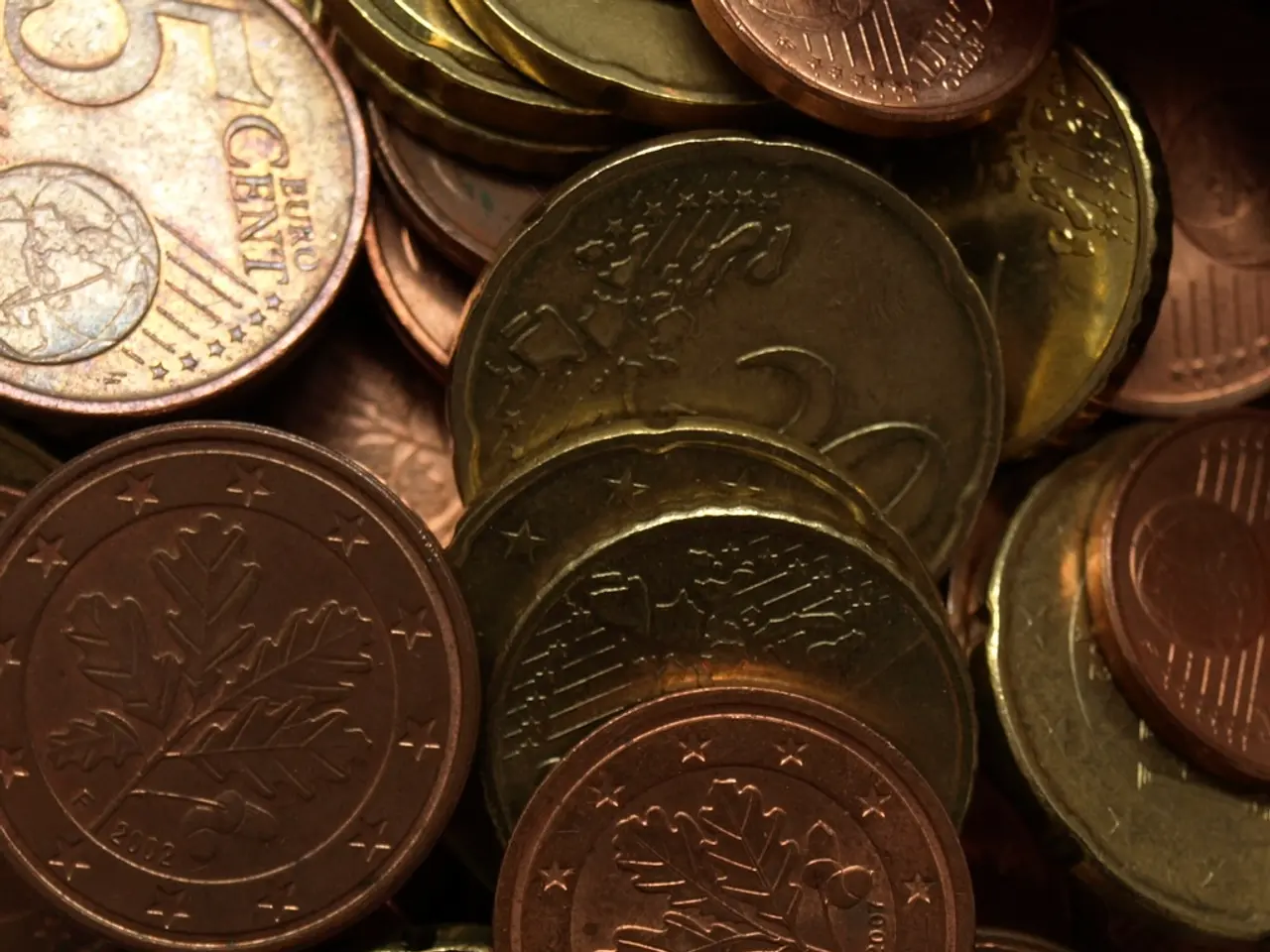Predicting Potential Millionaire-Creating Cryptocurrencies: A Comparison Between XRP and Solana
In the rapidly evolving world of cryptocurrency, two digital assets, Solana (SOL) and XRP, have caught the attention of investors as potential millionaire-makers by 2030. Both have unique strengths and weaknesses that could determine their growth potential.
Solana, a high-speed blockchain, is the second-largest in decentralized app deployment and user volume, second only to Ethereum. With a market cap of approximately $88 billion, Solana is attracting developers and institutional investors with its robust infrastructure. The cryptocurrency is currently experiencing a technical recovery, breaking out of a descending wedge pattern, and ChatGPT predicts SOL could reach $1,000 by the end of 2025 if supportive crypto legislation is passed, indicating substantial growth potential.
One of the key factors driving Solana's growth is the potential for Exchange-Traded Fund (ETF) approvals in the U.S., which could lead to significant inflows similar to those seen with Bitcoin and Ethereum ETFs. Discussions about incorporating SOL into a proposed U.S. digital asset reserve also bolster its credibility.
Solana's smart contract ecosystem is vibrant, with a thriving meme coin ecosystem and several other growth segments. Its potential to host real-world assets, particularly tokenized equities, gives it an edge over XRP in terms of explosive growth.
XRP, associated with Ripple, is known for its cross-border payment solutions and has a network of partnerships with over 500 financial institutions. Its price predictions for 2030 range from $90 to $120, driven by regulatory clarity and its role in the global financial ecosystem. However, these projections are generally more conservative compared to Solana's growth potential.
XRP faces ongoing regulatory challenges, particularly with the SEC, which could impact its growth trajectory. A favourable ruling could boost its price significantly. XRP is positioned to benefit from its utility in cross-border payments, but its growth might be more incremental compared to Solana's potential for explosive growth.
In conclusion, Solana appears to have a stronger potential for explosive growth and becoming a millionaire-maker by 2030 due to its robust infrastructure, potential for ETF approvals, and the impact of supportive legislation. While XRP has steady growth potential driven by its utility in cross-border payments and regulatory clarity, its growth might be more modest compared to Solana's upside potential.
However, it's important to note that making investors into millionaires through Solana or XRP is an ambitious goal, but technically not impossible over the course of a decade if blockchain finance truly eats capital markets. The growth of Solana could make its holders a lot richer, potentially reaching a market cap of approximately $8.8 trillion if it rallies about 100-fold. Similarly, XRP could reach a market cap of $17.4 trillion under the same conditions.
As always, it's crucial for investors to conduct thorough research and consider their risk tolerance before making investment decisions.
- For those interested in finance and technology, the potential growth of Solana and XRP in the cryptocurrency market is a significant investing opportunity, with Solana's market cap potentially reaching approximately $8.8 trillion if it rallies about 100-fold.
- Solana's robust infrastructure, potential for ETF approvals, and the impact of supportive legislation make it a candidate for explosive growth, possibly turning its holders into millionaires by 2030, as predicted by ChatGPT.
- While XRP also has growth potential, driven by its utility in cross-border payments and regulatory clarity, its growth might be more conservative compared to Solana, given the ongoing challenges with regulatory bodies like the SEC.




